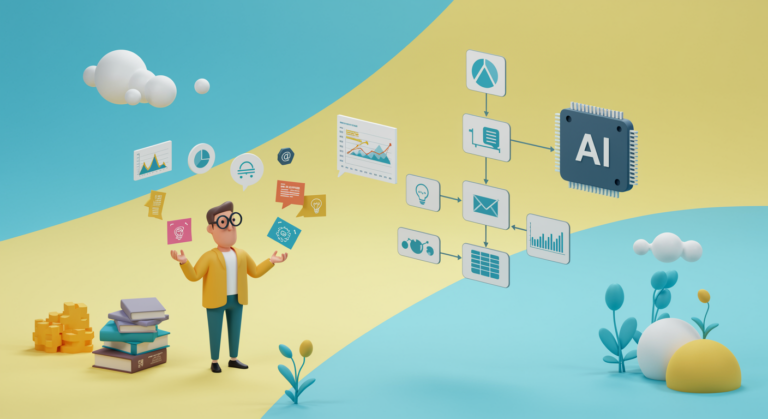
Duolingo AI Courses: 148 New Launches Replacing Contractors
Revolutionizing Language Learning with AI
Duolingo AI courses are making waves in the world of language education, with the platform announcing 148 new AI-powered offerings that double its catalog overnight. This bold move transforms how millions learn languages, shifting from human-led development to cutting-edge generative AI for content creation. While exciting, this change also sparks debates about innovation versus job security, as contractors face replacement in the pursuit of efficiency.
Imagine a world where picking up Spanish or Japanese feels as easy as playing a game, all thanks to AI handling the heavy lifting. Duolingo’s AI courses promise that by automating routine tasks, learners get fresh, tailored content faster than ever before, marking a significant step in edtech evolution.
Unprecedented Expansion in Duolingo AI Offerings
What sets Duolingo AI courses apart is the sheer speed of this expansion—going from 100 courses built over a decade to nearly 150 more in just a year. This leap is powered by generative AI, which crunches data and generates lessons at a pace that humans simply can’t match. For users, that means more options for beginner-level learning, aligned with CEFR A1–A2 standards, focusing on real-world immersion.
- Duolingo AI courses now include 148 fresh additions, covering top languages like Spanish, French, and Korean.
- Enhanced features such as Stories and DuoRadio boost reading and listening skills through interactive, fun modules.
- Support extends across 28 user interfaces, making it easier for global audiences to dive in.
Key Perks of Diving into Duolingo AI Courses
One of the biggest wins with Duolingo AI courses is how they speed up development while keeping quality high through automated checks. This means courses can be customized for different regions almost instantly, giving learners in places like Japan or India immediate access. Have you ever wished for a language app that adapts to your schedule? These AI-driven tools do just that, offering scalable personalization.
- Rapid rollout allows for quick updates based on user trends.
- Automated localization ensures content feels native, even in less common dialects.
- Global accessibility opens doors for non-English speakers to learn in their preferred languages.
Why Duolingo Is Going All-In on AI
The push towards Duolingo AI courses stems from a clear strategy to become an AI-first company, as outlined by CEO Luis von Ahn. By letting AI handle repetitive content creation, the team can focus on creative enhancements that make learning more engaging. This isn’t just about saving time; it’s about scaling up to meet the growing demand for language skills in a global job market.
“Developing our first 100 courses took about 12 years, and now, in about a year, we’re able to create and launch nearly 150 new courses. This is a great example of how generative AI can directly benefit our learners.” —Luis von Ahn, CEO.
Shaping the Future Workforce with Duolingo AI Integration
As Duolingo AI courses take center stage, the company is rethinking roles, prioritizing AI proficiency in hiring and training. This means contractors are being phased out for tasks AI can manage, freeing up human experts for higher-level innovations. If you’re in edtech, this trend might prompt you to upskill in AI tools to stay relevant.
- Automation handles routine jobs, allowing employees to tackle more strategic work.
- Performance evaluations now emphasize AI usage, highlighting its role in daily operations.
- Only non-automatable positions are being filled, pushing for a smarter workforce.
Von Ahn notes this approach might lead to minor quality trade-offs, but it’s essential for keeping pace in the AI race. What do you think—could this be the future of work in education?
User Backlash and the Human Side of Duolingo AI Courses
While Duolingo AI courses offer exciting advancements, they’re not without controversy, especially regarding the replacement of contractors who brought cultural depth to lessons. Many users worry that AI might miss subtle nuances, leading to less authentic content. This shift has sparked social media debates, with some learners pondering alternatives like traditional classes.
Picture a translator who spent years perfecting phrases—now, AI steps in, raising questions about job loss and the soul of language learning. It’s a reminder that technology, while powerful, can’t fully replace human insight. How would you feel if your favorite app suddenly changed how it delivers content?
- Former contributors are voicing concerns over lost opportunities in course development.
- Quality debates center on whether AI-generated material captures real cultural contexts.
- Some users are exploring other platforms, weighing the pros of gamified AI against human expertise.
How Duolingo AI Courses Actually Work
Under the hood, Duolingo AI courses use advanced generative models to build curricula, craft exercises, and even mimic natural speech for pronunciation practice. This setup allows for dynamic adjustments based on your progress, making sessions more effective and personalized. If you’re new to AI in education, think of it as a smart tutor that learns alongside you.
- AI enables fast localization, adapting courses to various dialects without delays.
- Content evolves with user feedback, ensuring lessons stay relevant and engaging.
- Compared to old methods, this approach cuts development time from years to mere weeks.
AI vs. Traditional: A Quick Breakdown for Duolingo AI Enthusiasts
When stacking Duolingo AI courses against contractor-led ones, the differences are clear in speed and scalability. Traditional methods relied on human teams for nuanced touches, but AI brings efficiency that traditional setups can’t match. Here’s a simple comparison to help you decide what’s best for your learning style:
| Aspect | Traditional Approach | AI-Driven Duolingo Courses |
|---|---|---|
| Time to Launch | Over a year | Weeks or months |
| Scalability | Limited by team size | Endless, with global reach |
| Localization Speed | Slow, manual processes | Quick, automated tweaks |
| Quality Assurance | Human-focused reviews | AI-backed for consistency |
| Cultural Nuance | Strong, experientially driven | Growing, with occasional gaps |
The Bigger Picture: Impacts of Duolingo AI Courses on Learning and Industry
Duolingo AI courses are setting a new standard in language learning, making education more democratic and accessible worldwide. With a surge in demand for languages like Mandarin, these tools break down barriers for diverse learners, potentially boosting career opportunities in international fields. But as AI takes over, it’s worth considering how this affects the broader edtech landscape.
For students, the benefits include tailored experiences that adapt in real-time, helping you master skills faster. If you’re aiming to learn a new language, try incorporating daily practice with Duolingo’s AI features—it’s a simple way to build habits and track progress effectively.
Top Benefits You’ll Love in Duolingo AI Courses
- Expanded language options cater to emerging global needs.
- Personalized paths keep you motivated and on track.
- Inclusive designs support learners from various backgrounds.
Challenges to Watch Out For
- Ensuring AI respects cultural sensitivities is an ongoing challenge.
- Maintaining high linguistic accuracy requires constant tweaks.
- Balancing tech innovation with ethical job considerations is key.
Wrapping Up: The Road Ahead for Duolingo AI Courses
In the end, Duolingo AI courses represent a pivotal shift, accelerating access to language learning while raising important questions about AI’s role in our lives. As the platform continues to innovate, it could inspire other apps to adopt similar strategies, blending technology with education in exciting ways. What might this mean for your own learning journey?
If you’re curious, why not try out these new courses and see the difference for yourself? Share your experiences in the comments below, or explore more on AI in education through our related posts. Let’s keep the conversation going—your thoughts could shape the future of learning.
References
- TechCrunch. “Duolingo launches 148 courses created with AI after sharing plans to replace contractors with AI.” Link
- Fast Company. “Duolingo doubles its language offerings with AI-built courses.” Link
- NASDAQ. “Duolingo launches 148 new language courses, marking largest expansion in company history.” Link
- Instagram Post. [Specific post reference]. Link
- Futurism. “Duolingo is replacing humans with AI.” Link
- Inc. “Here’s how Duolingo’s CEO translates AI use in the workplace.” Link
- The Register. “Duolingo CEO shifts to AI-first model.” Link
- YouTube Video. [Video title]. Link
Duolingo AI courses, language learning, generative AI, contractor replacement, edtech innovation, AI-powered courses, Duolingo language offerings, future of language education, AI in edtech, online learning platforms







